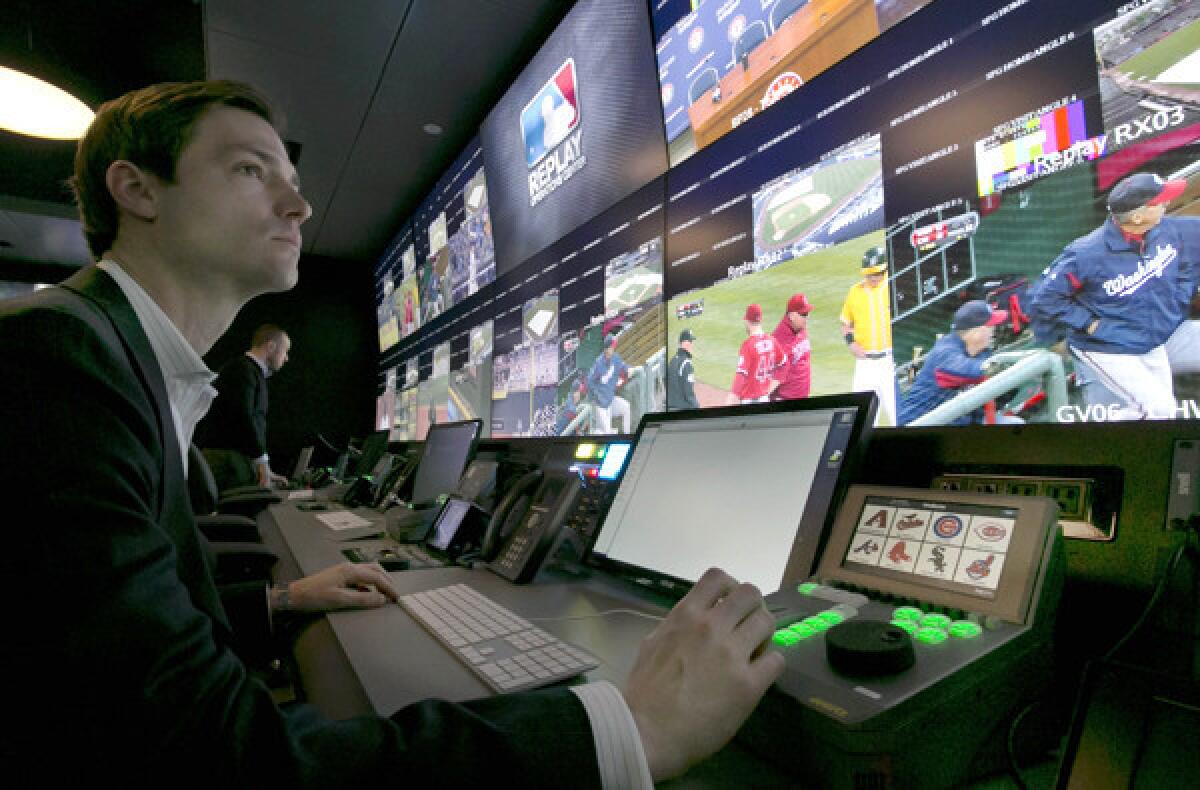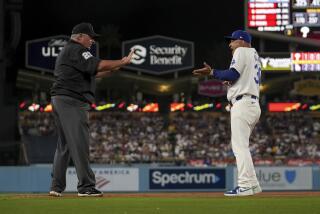MLB’s expanded instant replay needs to be reviewed

I liked Major League Baseball’s decision to dramatically expand its use of instant replay, believing it was time for a sport that is often resistant to change to embrace technology the way the NFL, NBA and NHL have.
But after seeing the replay process play out — rather clumsily at times — this spring, I’m less of a fan. The new system requires too many layers of evaluation and communication, and it is sure to disrupt the flow of games.
First, the manager, in what amounts to an on-field filibuster, must initiate a discussion with an umpire to give his video coordinator time to review the play to determine whether the call should be challenged.
This will take at least 30 seconds, though rules state a manager must request a replay before the pitcher steps on the rubber and the next batter steps into the box. If the call is challenged, it then must be reviewed by replay officials in New York City, adding to the delay.
Umpires will don headsets near the dugouts or backstop to communicate with the New York office. Once they get a ruling, it will take more time to inform the managers and jog back to their positions.
Commissioner Bud Selig had long opposed instant replay because he feared it would hamper the pace of the game. Well, guess what?
“There’s no way it’s not going to slow the game down,” said Angels second baseman Howie Kendrick.
The system could also become a strategic ploy. Say a pitcher is throwing a shutout in the sixth inning and the opposing manager hasn’t used his challenge. The manager, in an attempt to disrupt the pitcher’s rhythm, could challenge a play even though it’s clear the correct call was made.
There will be confusion. Say the third out is on a close play at first base, the defense trots off the field, and a manager needs time to determine whether to challenge. Does the network go to a commercial break?
And if a manager is out of challenges — he gets one a game, two if the first is successful — he can still run onto the field to dispute a call, even though instant replay is supposed to cut down on such arguments.
“It’s definitely a work in progress,” said Angels Manager Mike Scioscia. “This is a first step.”
Here’s what the next steps should be: Eliminate the managerial challenges. Eliminate the video-room suites in each clubhouse. Eliminate the headsets near the dugout. And, as painful as this would be, knowing the millions of dollars baseball has invested in it, eliminate the central replay office in New York.
This is not a vote against instant replay. Once some of the kinks of the current system are worked out, it will probably become a more seamless exercise as it is in the NFL, which endured its share of replay growing pains.
But it feels like overkill. After seeing the system in action this spring and talking to several longtime front-office executives, managers, coaches and players about it, it seems the process could be streamlined considerably.
How about this? Have a fifth umpire at every game in an instant-replay booth located in the press box or a spot from which he can view the game. This umpire would be the primary arbiter of the replay process, and each team would have a replay advocate — in case a second opinion is needed — in the booth.
When a close play warrants review, the replay official could immediately illuminate a red lamp, like those behind NHL goals, behind the plate.
His decision could be relayed to the crew chief via Bluetooth headset, eliminating the need for any of the four on-field umpires to leave their posts.
Most decisions could probably be rendered in 30-40 seconds, or about the time it usually takes for one play to end and the next pitch to be delivered. If a decision can’t be made in a minute or so, deem the replay inconclusive and stick with the call on the field.
Think about it. How many times, while watching a game on television, can you tell after two or three replays that a close call was correct or not?
The replay umpire would essentially be like that fan at home, though he’d have the advantage of highly sophisticated technology and would be viewing replays through trained eyes.
One drawback to this system is that more plays might be reviewed. But by eliminating the strategic — and decision-making — elements from managers and the communication between middlemen, reviews could be done in a more timely fashion, and games would flow more naturally.
Twitter: @MikeDiGiovanna
More to Read
Go beyond the scoreboard
Get the latest on L.A.'s teams in the daily Sports Report newsletter.
You may occasionally receive promotional content from the Los Angeles Times.











